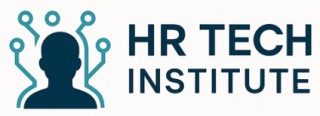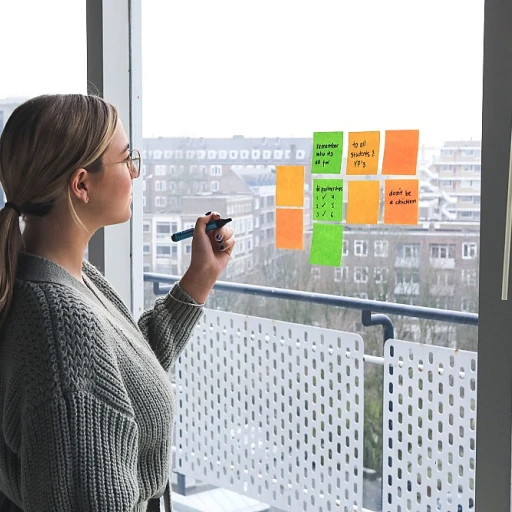The Importance of a Warm Welcome
Building the Foundation for a Successful Start
The first day at a new job sets the tone for an employee's experience within a company. A well-crafted welcome letter is a pivotal component of the onboarding process that introduces new hires to the company's culture and values. This initial communication helps new employees feel part of the team, thereby laying the groundwork for positive engagement and productivity.
For companies aiming to build a cohesive team, a warm welcome goes beyond mere formalities. It shows new employees that they are valued additions. Moreover, a thoughtful welcome letter reinforces the message that they have made the right choice by joining this team. You'll demonstrate the company's dedication to its employees and foster an environment of trust and openness from the outset.
A compelling welcome message not only provides essential information but also injects personality and warmth into the process. By taking the time to craft a personalized and sincere welcome letter, managers ensure that new hires feel appreciated and motivated right from the start. Thus, the emphasis should be on welcoming the new team members in a manner that aligns with your company's ethos, making the newcomers feel less like outsiders and more like an integral part of the company's fabric.
Key Elements of an Effective Welcome Letter
Essential Components for a Successful Welcome Letter
Creating a welcome letter that resonates with new employees is crucial for setting the tone of their journey with your company. A well-crafted welcome message can make all the difference in how a new hire perceives their first day and the overall onboarding process. Here are some key elements to include:
- Warm Greeting: Start with a friendly and welcoming tone. Address the new employee by their job title and express excitement about their arrival.
- Introduction to the Company Culture: Briefly describe the company culture and values. This helps the new team member understand what makes your company unique and what they can expect from their work environment.
- Overview of the Onboarding Process: Provide a snapshot of what the first few days will look like. This can include details about the onboarding schedule, meetings with team members, and any initial training sessions.
- Contact Information: Include contact details for the new hire's manager or a point of contact within the team. Encourage them to reach out if they have any questions or need help.
- Practical Information: Share essential details like the dress code, office location, and start time. This helps the new employee feel prepared and reduces first-day jitters.
- Personal Touch: Personalize the letter by mentioning specific aspects of the employee's role or their contributions to the team. This makes the welcome feel more genuine and meaningful.
By incorporating these elements, your welcome letter can become a powerful tool for boosting employee engagement and ensuring a smooth transition into the company. For more insights on creating engaging welcome messages, check out this guide to funny images that can add a touch of humor to your communications.
Personalization: Making It Meaningful
Personal Touch: Customizing Every Welcome
When crafting a welcome letter, injecting a bit of personalization can significantly enhance the employee engagement experience. This isn’t just a step in the onboarding process; it is a crucial way to demonstrate that the company values each new hire as an individual. A tailored welcome message can help a new employee feel seen and appreciated, setting a positive tone for their first day at work. While the structure of your letter might be supported by a template, dedicating time to personalize aspects of it transforms the interaction from generic to meaningful. Begin by addressing the new team member by name and referencing their specific job title and department. This small detail reinforces that they are an integral part of your team and not just another cog in the company machine. Further personal touch can be conveyed by including a few significant details about the new hire, such as any personal achievements or skills noted during the hiring process. Perhaps they demonstrated outstanding leadership in a previous role or showed impressive problem-solving capabilities. By incorporating these acknowledgments into the welcome letter, you subtly communicate that the company has a keen interest in leveraging these talents while fostering a sense of belonging and recognition. Additionally, highlighting aspects of the company culture that align with the employee’s interests or values can work wonders. For example, if the team values time off practices that promote work-life balance, inviting them to embrace trust-based time off could be immensely motivating. Ending the letter with a personal touch, such as letting them know their manager or a peer will reach out to help them get accustomed to the workspace, ensures the new employee will feel welcome and reassured in their ability to navigate their new surroundings. Don’t hesitate to invite them to reach out if they have questions about the dress code or any other aspect of their new role. Personalization in every communication demonstrates the company’s commitment to a warm welcome.Leveraging Technology in Welcome Letters
Harnessing Digital Tools for a Seamless Welcome
In today's digital age, technology plays a crucial role in enhancing the onboarding process and ensuring every new hire feels integrated and valued from day one. Implementing digital solutions in crafting the perfect welcome letter can significantly simplify the workflow while maintaining personal connections. Here’s how you can utilize technology effectively:- Automated Distribution: Use software that automatically sends welcome letters on a new employee’s start day. This not only ensures timely communication but also gives a professional first impression of your company’s efficiency.
- Integrating Digital Forms and Links: Hyperlink relevant resources within the letter, such as the dress code policy, maps for the first work day, or a list of team members they will collaborate with. This makes it easy for new employees to access everything they need to start off right without lengthy paper trails.
- Video Messages: A personalized welcome message from the manager or the welcome team can add a warm touch to the onboarding process. Short videos can be particularly effective in conveying enthusiasm and introducing the company culture.
- Employee Portals: Directing new hires to a welcome portal can provide them with a wealth of information at their fingertips. Employee engagement can be enhanced by allowing new hires to explore the company at their own pace and connect with their team members in advance.
Common Mistakes to Avoid
Steering Clear of Common Pitfalls in Welcome Letters
Crafting a welcome letter for a new employee is an important step in the onboarding process that requires attention to detail. Ensuring that you avoid common mistakes can help your new hire feel welcomed and ready to start the job with confidence. Here are some common pitfalls to be aware of:- Overloading with Information: It's crucial to provide essential details such as the job title, manager contact, and dress code, but overwhelming your new team member with too much information can be counterproductive. Focus on the essentials that will smooth their first day.
- Generic Messages: Welcome letters should not be filled with boilerplate text. While templates are helpful, they should serve as a starting point for a customized welcome message. Ensure each letter reflects your company culture and provides a warm welcome.
- Lack of Personal Touch: Personalization makes a welcome letter truly meaningful, boosting employee engagement. Including specific details about their role, team members, and any upcoming events they should prepare for can make the letter feel more personal.
- Forgetting Elements of the Onboarding Process: A welcome letter is a great place to outline what the new employee should expect in the coming days. Mention any orientation sessions, training schedules, or introductions that are a part of their onboarding experience.
- No Call to Action: Ensure the letter includes a clear, inviting call to action. Encourage the new employee to feel free to reach out with any questions and don't hesitate to emphasize support. This builds an open line of communication from day one.
Sample Welcome Letter Template
Template for a Warm Welcome
Creating a welcome letter is a vital step in the employee onboarding process. Below is a template that integrates the essential elements we've discussed previously, ensuring a comprehensive and inviting welcome for your new hires. Adjust this template to fit your company's unique culture and the specific job title of the employee.
Subject: Welcome to [Company Name] – Your Journey Begins Here!
Dear [Employee Name],
Welcome to the [Company Name] team! We are thrilled to have you on board and are confident that you will be a valuable addition to our growing company.
Your start date is set for [Start Date], and your first day will kick off at [Time]. Upon arrival, please head straight to the reception area where a member of our welcome team will meet you. Your manager, [Manager Name], will guide you through the initial steps and introduce you to the team members.
We've arranged an orientation session to familiarize you with our work environment, company culture, and the specific tools and resources you'll need to excel in your new role. This session will also cover important details such as the dress code and contact points within the company.
If you have any questions in the meantime, or if there’s anything you need to help ease into your new job, please don’t hesitate to reach out. We're here to make this transition as smooth as possible for you.
We're excited to see the great things you will accomplish and are here to support you every step of the way.
Warm regards,
[Your Name]
[Your Job Title]
[Company Name]
[Contact Information]
Feel free to personalize this template to better reflect your organizational values and to ensure new employees feel included from day one. Remember, a thoughtful and well-crafted welcome message is an essential component for fostering employee engagement and a productive working relationship right from the start.













